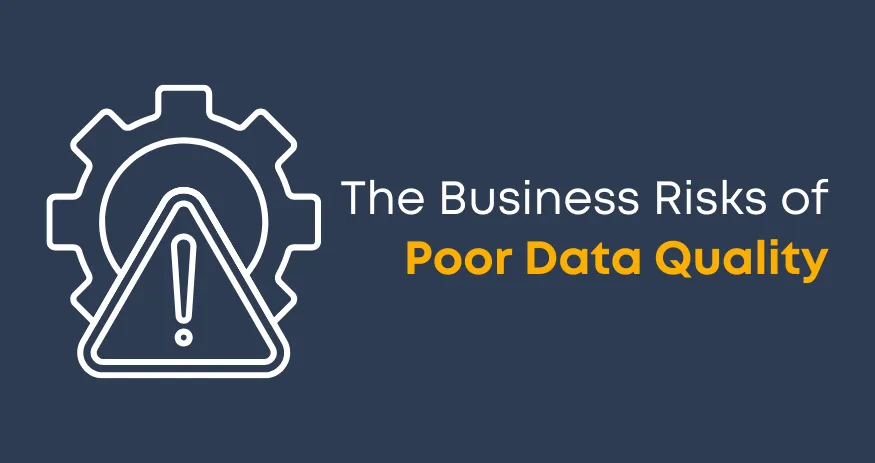Data is at the core of every business operation today. It drives decisions, supports customer service, and fuels growth. Yet, many organizations still overlook how they handle and store their information. Poor data management is more than just an inconvenience; it can quietly erode productivity, create compliance risks, and cost a company time and money.
When records are incomplete, disorganized, or stored without proper oversight, businesses lose visibility into their own operations. This lack of control doesn’t just affect efficiency—it can also threaten customer trust and long-term sustainability. Understanding the risks of poor data management and learning how to correct them is essential for any business that wants to operate securely and effectively.
What Poor Data Management Looks Like
Poor data management takes many forms. It can mean stacks of unfiled paperwork, mislabeled folders, or shared drives filled with outdated files. Some organizations store critical records in multiple places without clear systems to track them. Others simply lack policies that define who manages which information and how long it should be kept.
These issues might seem minor at first, but they build over time. A missing contract, a misplaced client record, or an inaccessible backup can delay projects and create unnecessary stress. Even in companies that have moved most of their data online, physical documents still matter. Without clear organization and control, it becomes difficult to locate the information needed to make informed decisions or pass compliance audits.
Risk 1: Compliance and Legal Exposure
Every industry faces regulations that govern how long certain records must be stored and how they should be protected. Healthcare, finance, and legal sectors, for example, are subject to strict data retention and privacy laws. If a company cannot produce records when required, or if sensitive data is compromised, the consequences can be severe.
Poor data management often leads to accidental non-compliance. Lost files, incomplete archives, or insecure storage may result in fines or reputational damage. Even small businesses can face legal challenges if they mishandle confidential information. Maintaining an organized and secure data management system helps ensure that records are readily available, properly protected, and compliant with current regulations.
Risk 2: Lost Productivity and Increased Costs
Disorganization directly affects efficiency. When employees spend time searching for misplaced files or trying to verify which version of a document is current, productivity suffers. Repeating work that has already been completed or recreating lost data wastes both time and money.
Inefficient data systems can also slow customer response times. A delay in accessing order histories, invoices, or service records can frustrate clients and damage relationships. A clear, structured approach to information management helps businesses recover lost hours, streamline workflows, and reduce unnecessary duplication of effort. Over time, this leads to higher output with less operational strain.
Risk 3: Vulnerability to Security Threats
Data security involves more than digital firewalls. Poorly managed physical files can be just as vulnerable as unprotected computer systems. Paper records left in open office areas, unsecured storage rooms, or poorly maintained archives invite risks such as theft, water damage, or unauthorized access.
Unorganized digital storage can also lead to accidental data exposure. Files may be shared without proper permissions or stored on devices that are not adequately protected. Combining weak physical practices with inconsistent digital oversight increases the likelihood of data loss or breaches. Businesses that want to safeguard their information must create clear access rules and secure every layer of their storage environment.
How to Fix It: Building a Smarter Data Management System
Improving data management starts with awareness. Conducting a thorough audit of existing records helps identify what information exists, where it is stored, and who has access to it. Once this inventory is complete, organizations can create a retention schedule that defines how long each type of record should be kept and when it can be safely destroyed.
Implementing clear labeling and indexing systems makes retrieval faster and more reliable. Regular cleanups help remove outdated or duplicate files that clutter digital drives and physical cabinets. Just as important, employees should receive training to ensure everyone understands and follows consistent data handling procedures. These steps create the foundation of a sustainable management system.
Using Professional Storage to Strengthen Data Control
As businesses grow, managing all records in-house can become a challenge. Limited space, environmental risks, and staffing constraints make it difficult to maintain secure, organized archives. Partnering with professional storage providers can solve these problems by offering controlled environments, systematic organization, and expert oversight.
Using reliable providers of offsite storage solutions allows businesses to keep vital documents, backups, and equipment in secure facilities designed for protection and accessibility. These services reduce the risk of loss while freeing up valuable office space and staff resources. With professional management, companies gain better control over their records and can retrieve what they need quickly and safely.
Integrating Digital and Physical Data Management
The most effective data strategies bring physical and digital management together. Digitizing paper records improves accessibility, but original copies often still need to be preserved for compliance or verification. Synchronizing both systems ensures that every piece of information is accounted for and easy to find.
A well-integrated system uses indexing tools or software to connect digital entries with their physical counterparts. This creates a single, reliable source of truth across departments. By viewing all records—regardless of format—as part of one ecosystem, businesses can maintain consistency and accuracy while preparing for future growth.
The Long-Term Benefits of Strong Data Practices
Strong data management does more than reduce risk. It supports better decision-making by providing accurate and up-to-date information when it is needed most. It improves customer confidence because clients know their data is handled responsibly. It also simplifies audits, supports compliance, and gives leadership a clearer view of company performance.
Efficient data management systems evolve with the business. They allow for smooth scaling as operations grow and new data types emerge. Companies that invest in organizing and protecting their information are better positioned to adapt to changing markets and technologies.
Conclusion
Poor data management leads to major problems like lost information, compliance failures, and wasted resources. These issues are preventable through regular data audits, staff training, and reliable storage, combining both digital and physical methods. Effective data management safeguards business integrity, improves efficiency, and builds lasting trust.




